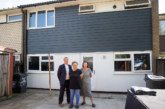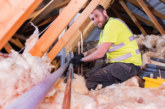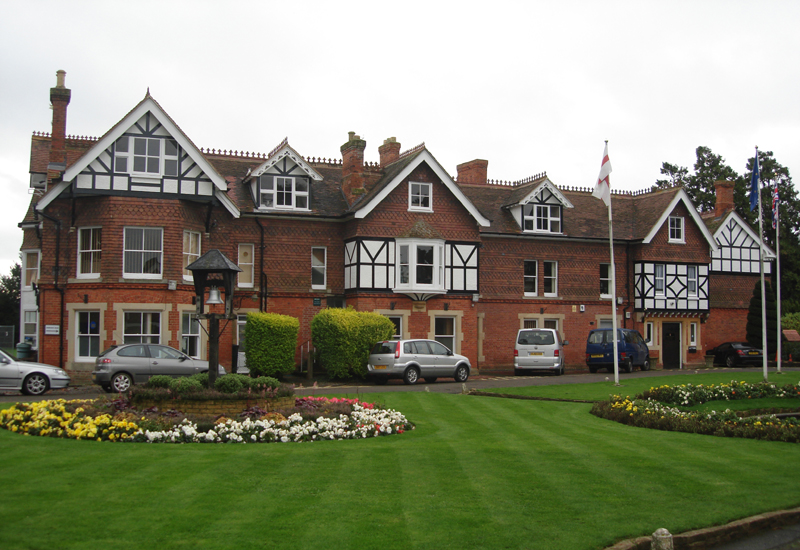
Building performance evaluation has been used in a study by Oxford Brookes University to assess the low energy refurbishment of council offices in an 1830s hunting lodge, explains Professor Rajat Gupta, who presented the case study at the recent CIBSE Technical Symposium.
The Low Carbon Group at Oxford Brookes University has used a building performance evaluation (BPE) approach to evaluate the impact of innovative improvement measures on the refurbishment of a hunting lodge which was built in the 1830s and is now in use as an office building for the local council and other tenants.
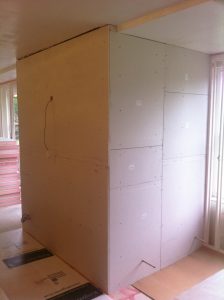 The construction of the three-storey building is typical of its era. Its ground floor walls are uninsulated solid brick and stone; the first floor walls are timber frame construction incorporating a tile-hung exterior, while the pitched roof, enclosing an unused second floor attic, is clad in clay tiles. All windows are single-glazed sash units.
The construction of the three-storey building is typical of its era. Its ground floor walls are uninsulated solid brick and stone; the first floor walls are timber frame construction incorporating a tile-hung exterior, while the pitched roof, enclosing an unused second floor attic, is clad in clay tiles. All windows are single-glazed sash units.
Investigations revealed that the building had high levels of fuel use but provided low levels of occupant comfort. To assess where improvements were most needed, Oxford Brookes University undertook the first of its building performance evaluations. This included air permeability and thermal imaging studies to assess the performance of the building fabric and over winter (when the windows were closed) the team also measured indoor air temperature, CO2 levels and relative humidity. These findings were then cross-related with occupant satisfaction feedback, collected through questionnaires, surveys and interviews.
The study provided the baseline performance against which the performance of the post-refurbished building could be judged. It also revealed that the building had an air permeability of 20.5m3/hour/m2 of building envelope, a long way shy of the current Building Regulations. The annual gas consumption was measured as137kWh/m2.
The evaluation also confirmed the need to focus on improving the thermal performance of the building fabric, including that of the sash windows. Detailed modelling using dynamic thermal simulation software was used to help estimate the energy and CO2 savings from various improvement measures to ensure the most effective improvements were adopted. The modelling highlighted that the most effective improvements could be achieved with the application of internal insulation to the walls and fitting double glazed secondary units to help improve the thermal performance of the sash windows.
Refurbishment work
Works to refurbish the hunting lodge took place between November 2013 and April 2014. To provide a control against which the refurbishment could be compared only half of the local council occupied areas (17 rooms) were refurbished.
Internal insulation was applied to the inner face of the external walls using an innovative insulation system more commonly used in the refurbishment of housing. This uses a laser to survey each room. The dimensional data is then fed into a factory-based cutting machine, which subdivides the wall into a series of sheets of insulated plasterboard, which it them cuts precisely to size to cover the entire wall.
The biggest drawback from using this system on the refurbishment of a historic building was that many more pieces of the insulation had to be cut, than would normally be the case, to fit around both the historic features and the new secondary glazing. The solid ground floor also had a layer of insulation added, as did the eves to prevent gaps occurring at the junction of the wall and roof insulation.
The other major addition was a mechanical ventilation unit with a heat recovery feature (an MVHR unit) to serve the first floor. In total, the retrofit measures were predicted to achieve a 58% saving in energy use and a 37% reduction in carbon emissions.
Building performance evaluation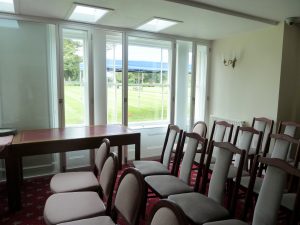
Following completion of the works the University carried out the second of its building performance evaluations to find out whether the building was performing as predicted. These showed the building was far more airtight and that air permeability had been reduced to 10.6m3/hour/m2. However, even with this 52% reduction of in air permeability, air leakage was still considered to be high so an additional smoke pencil survey was undertaken to locate areas where there were significant leaks.
The survey revealed that air was leaking through gaps around door frames, skirting boards, exposed floor boards and some secondary glazing. In addition to the air permeability, thermal imaging, and tests on the effectiveness of the MVHR unit were undertaken.
The thermographic study showed an improvement in the thermal performance to the external walls for the half of the building that had been refurbished. However, the study revealed that there were thermal bridges at the junction between the external wall and roof and at the junction between the internal walls and external wall. There were also thermal bridges caused by the fixings for the insulation.
Tests on the MHVR revealed that the unit had been installed and commissioned inappropriately so that in some spaces the unit failed to supply the minimum ventilation rate of 8 litres/second/person even at the highest, noisiest fan setting. Although the occupants have the option of opening the windows for additional fresh air, it was recommended that the unit was used at the higher fan speed and re-commissioned accordingly.
Study findings
Other findings taken over the first year of occupation included:
- CO2 concentrations were found to remain below the recommended maximum of 800ppm for 70% of the time.
- Temperatures in most rooms ranged between 15˚C to 23˚C in winter and 20˚C to 26˚C in summer.
- Most occupants were satisfied with the building post-refurbishment, although there was criticism for the lack of zoning for the heating and confusing controls on the MVHR unit, boiler, smoke and security alarms
- The building achieved a 58% overall reduction in annual energy use — exactly as predicted — and its annual heat and electricity use were found to be lower than the CIBSE TM46 benchmark.
The study clearly demonstrates that it is possible to refurbish a historic non-domestic building. It also highlights the value of a two-stage building performance study in identifying, delivering and checking the performance of innovative refurbishment solutions for a historic, non-domestic building.


